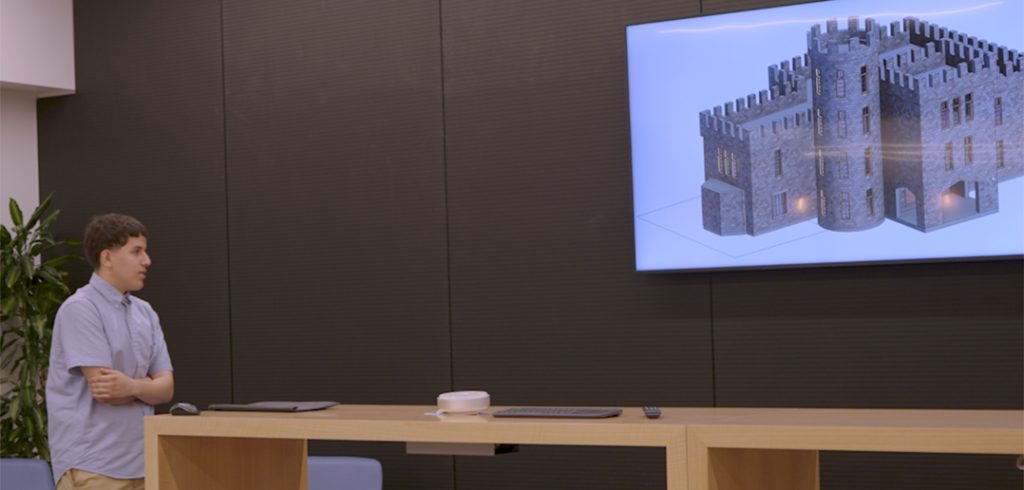On June 1, the three parts of the team gathered in person for the first time at Fordham’s LITE Center at Rose Hill to show off their work and speak more about the exciting new app that they are hoping to complete.
The app will allow users to walk around New York City and use their phones to pull up 3D models, images, and information about medieval-inspired structures that once stood where they are standing. It will also show viewers medieval-inspired elements that still exist in the city today.
“We have [created] these … walking tours … that showcase points [around the city] that aren’t medieval, but are medieval in a way that’s understood very broadly,” explained Christina Bruno, Ph.D., co-director of the project and associate director of the Center for Medieval Studies.
These points include examples of medievalism in architecture around the city, like coats of arms, statues and monuments that depict medieval figures, and places that have collections of medieval objects (like the Met Cloisters). In addition, they have included spots that speak to what New York itself looked like during what we think of as the medieval period, between 500 and 1500 CE, before contact with Europeans.
“[This] will hopefully be supported by a mobile application with audio guides, AR/VR content; and that is how we got involved with the New Rochelle High School students,” Bruno said.
Katherina Fostano, visual and digital resources director at the Center for Medieval Studies, happens to be friends with the chair of the math department at New Rochelle High School.
“She connected us with a class of architecture students who went on to become very interested in the project and [began] to build 3D models of structures around the city that no longer exist,” said Bruno.
Building Castles in 3D
One student in particular was especially interested in working on the project: New Rochelle senior Maximiliano Aguilar.
The Center for Medieval Studies gave Aguilar incomplete pictures and drawings of medieval-style castles built during the 19th century that used to exist in New York City. Using only the pictures, Aguilar was able to construct 3D scale models of these formally impressive structures. In the year he’s been working on the project, he has been able to build two castles, Libbey Castle and Paterno Castle, fully, and plans to finish a third model that he has started over the summer.
“[The coolest thing] was the introduction to a new type of architecture,” said Aguilar, who will start at Fordham this fall. “In class, it was just simple house designs, and when I got introduced to this, I got introduced to castles … which was definitely something new to me.”
The castles that Aguilar has built and is building are the AR/VR element of the Medieval New York Project. When a user opens the app near where the castle once stood, they will be able to see through the camera a 3D model of what the castle would have looked like.
“We realized that we have a valuable opportunity to leverage emerging technologies and capture and share medievalism throughout New York City,” said Nicole Zeidan, Ed.D., assistant director, emerging educational technology and learning space design at Fordham.


